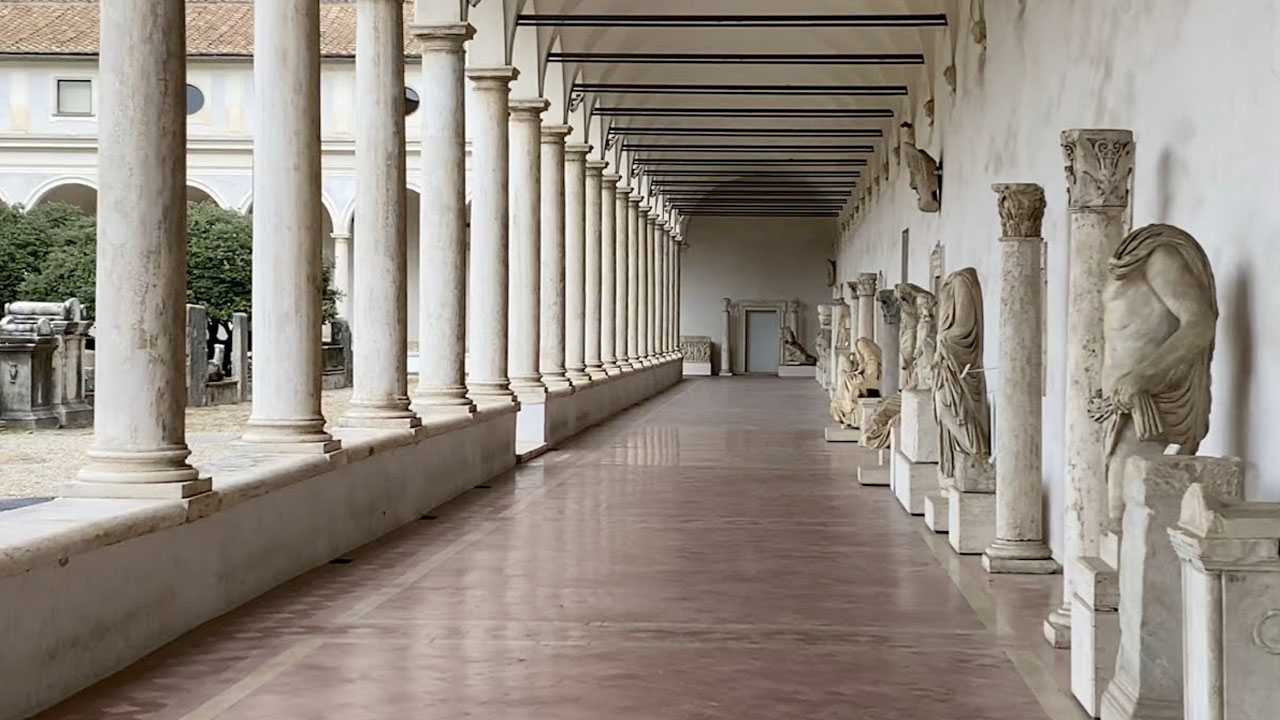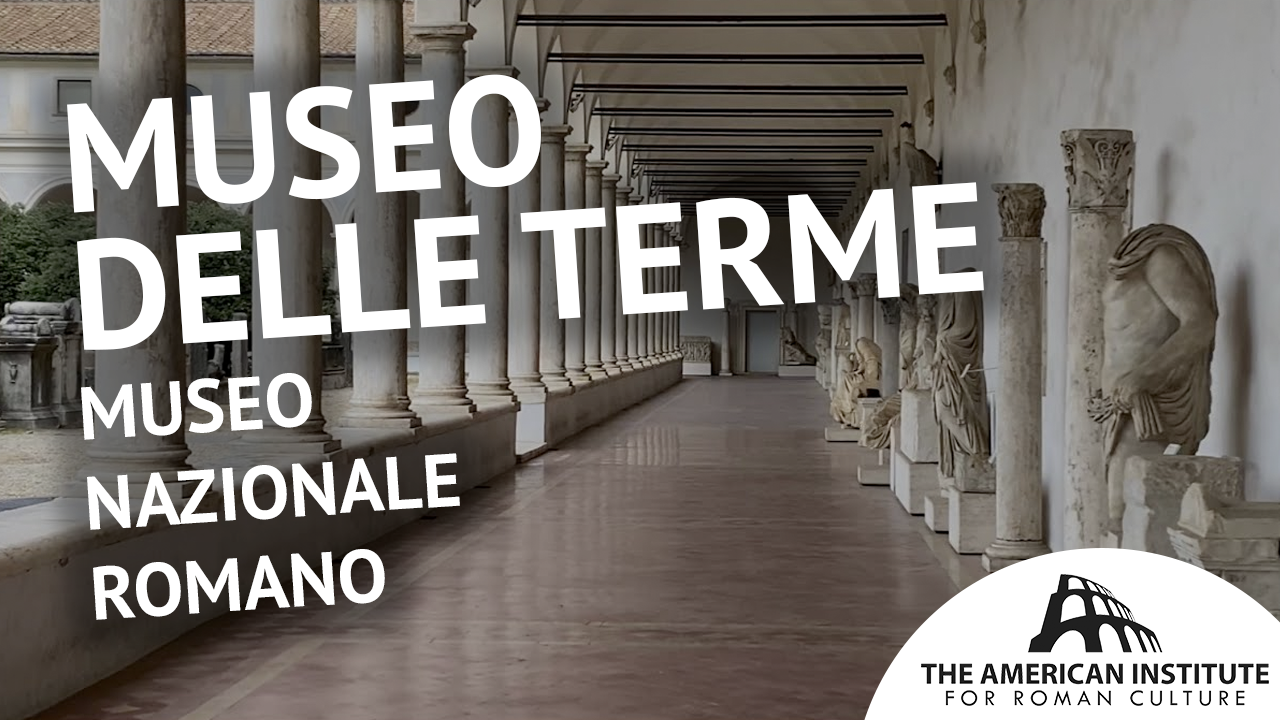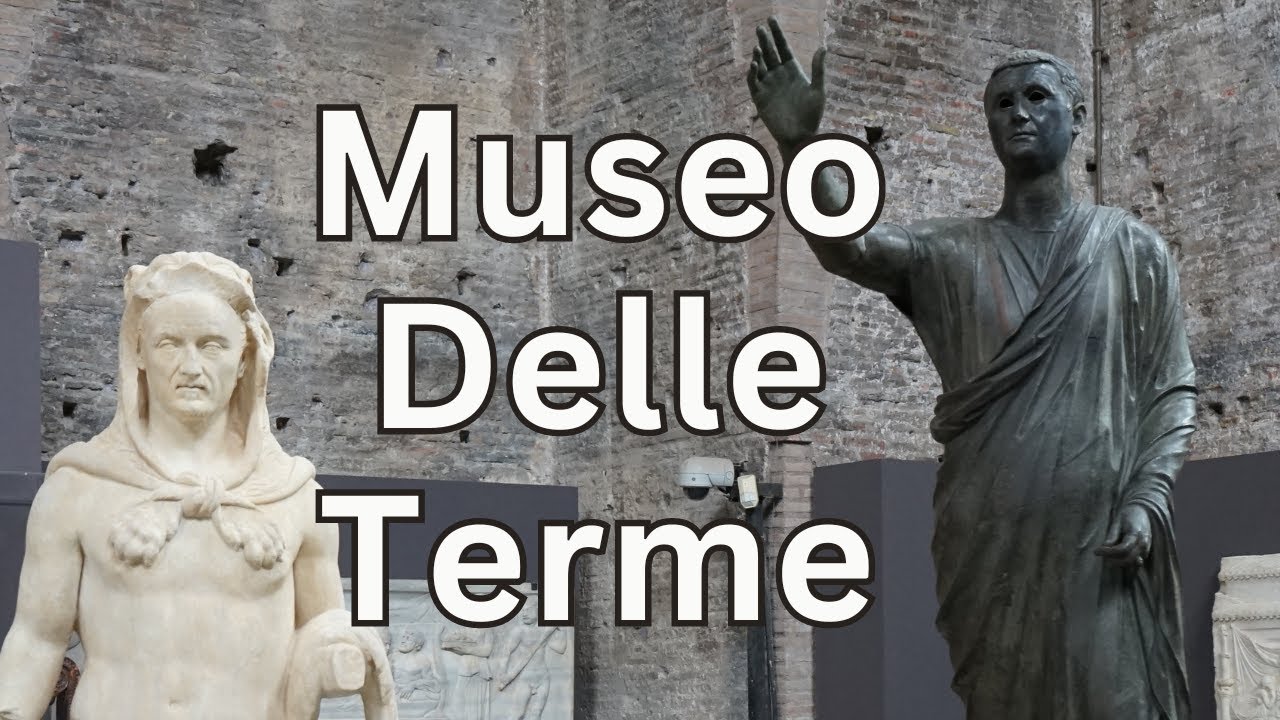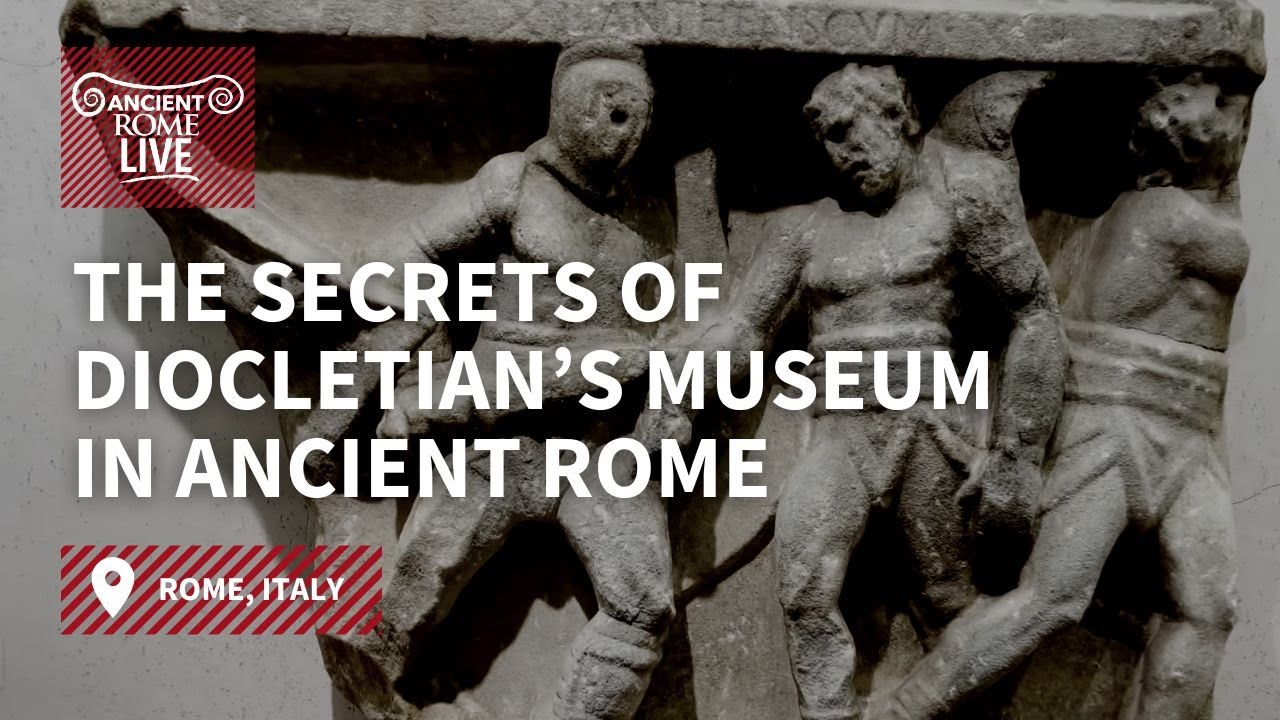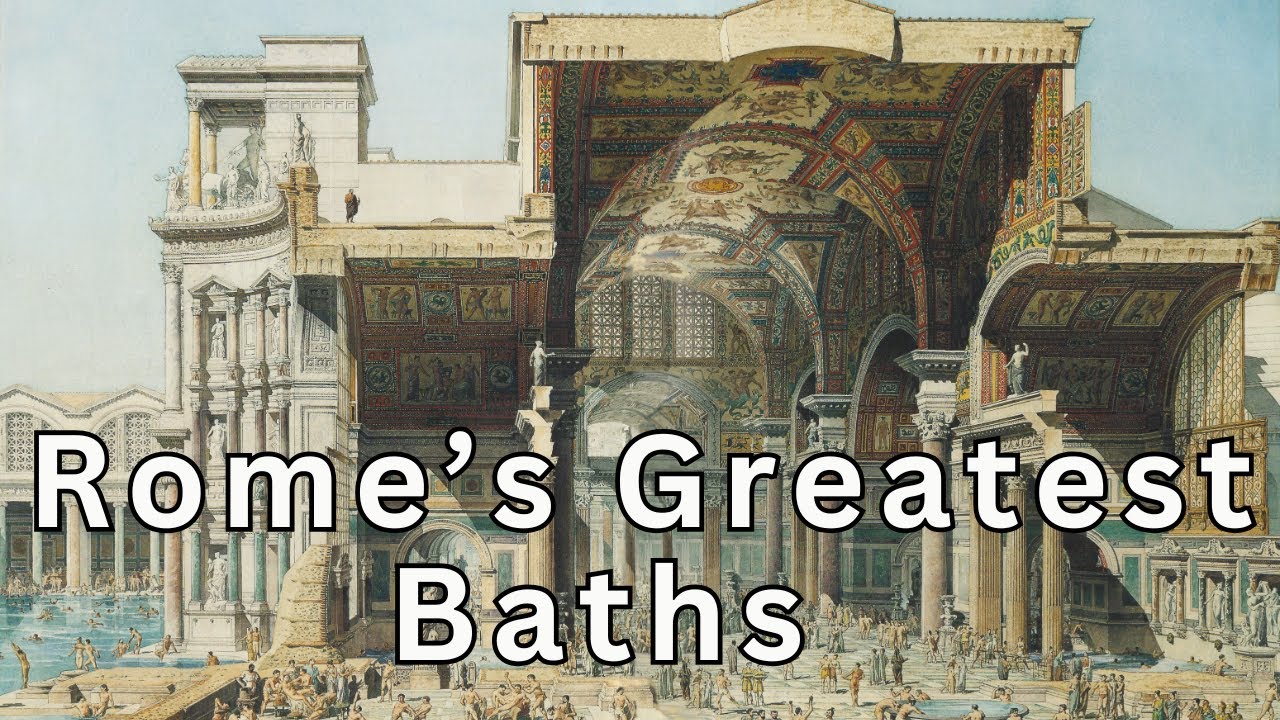Museo delle Terme is nestled in the ruins of the Diocletian Baths, where the antique collections of the Museo Nazionale Romano are exhibited within an archaeological site. This follows the strong tradition in Rome of reusing architecture to create and amplify new spaces, as can be seen in the 16th century church designed by Michelangelo embedded in another part of the same complex.
Dedicated in 305-306 CE, the Diocletian Baths were constructed by Maximian in honor of his co-emperor. The baths were intended for public benefit and as a tactic of imperial propaganda. They extended over an 11-hectare area, sumptuously decorated with statues, fountains and consisting of the typical linear sequence of a large open-air pool (natation), covered cold hall (frigidarium), small intermediary warm room (tepidarium) and a large, heated hall (caldarium) flanked on both sides by rooms for lounging, changing, and reading. The intended visitors were the numerous inhabitants of the ancient area, with seats for at least 3,000 people until the baths were abandoned in the 6th century after the aqueducts that served them were destroyed in the Gothic wars.
Yet Museo Nazionale Romano was not the first institution to take interest in repurposing the ruined baths: in 1563 Pope Pius IV commissioned the elderly Michelangelo to design a church and charterhouse within the frigidarium and tepidarium which would be dedicated to Our Lady of Angels and Christian Martyrs, following the tradition that many Christians lost their lives during the original construction of the Diocletian baths. This church still stands beside the modern museum and houses its own exhibition about the history of the site.
Although originally the only site of the Museo Nazionale Romano, Museo delle Terme is now one of four exhibition spaces and contains the protohistoric and epigraphic collections. The former showcases the development of culture in the Lazio region from the Bronze Age to the Iron Age and Orientalising Period, with over half a millennium of archaeological data revealing the transition from egalitarian tribes to politicized metropolises during this period. All facets of this epoch in the history of the wider Rome area are evidenced through this collection, from short and long-distance cultural interactions to social stratification, economic activity, religious ideology, and political organization.
The extensive epigraphic collection consists of more than 20,000 items, of which 900 are currently on display; these include direct accounts of daily life from all social strata. One of the most insightful pieces on display are the monumental pillars recording the Ludi Saeculares of 17 BCE and 204 CE: these rare celebrations took place every 110 years, with sacrifices and theatrical performances to mark the boundary between one saeculum (supposedly the longest period a human could live) and another. Another compelling item is the 4th century CE collar inscribed with instructions to return an enslaved person to a slaver in case of their escape, with the promise of a gold coin in reward – a haunting testament to the brutal reality of ancient Roman society.
Bibliography
- Claridge, “Rome: An Oxford Archaeological Guide”, (Oxford 2010), 391-5; 481-3.
- Marconi, “The Oxford Handbook of Greek and Roman Art and Architecture”, (Oxford 2018), 487.
- Lipka, “Roman Gods: A Conceptual Approach” (Leiden 2009), 64.
- Dunning, “The transformation of the saeculum and its rhetoric in the construction and rejection of Roman imperial power”, in Faure, Richard; Valli, Simon-Pierre; Zucker, Arnaud (eds.) “Conceptions of time in Greek and Roman antiquity”, (Berlin 2022).
- Platner, “A Topographical Dictionary of Ancient Rome: Thermae Diocletiani”, (Chicago 1929).
This content is brought to you by The American Institute for Roman Culture, a 501(C)3 US Non-Profit Organization.
Please support our mission to aid learning and understanding of ancient Rome through free-to-access content by donating today.
Cite This Page
Cite this page as: Darius Arya, The American Institute for Roman Culture, “Museo delle Terme / Museum of the Baths of Diocletian (Museo Nazionale Romano)” Ancient Rome Live. Last modified 04/06/2021. https://ancientromelive.org/museo-delle-terme-museum-of-the-baths-of-diocletian-museo-nazionale-romano
License
Created by The American Institute of Roman Culture, published on 03/29/2021 under the following license: Creative Commons: Attribution-NonCommercial-ShareAlike. This license lets others remix, tweak, and build upon this content non-commercially, as long as they credit the author and license their new creations under the identical terms. Please note that content linked from this page may have different licensing terms.

